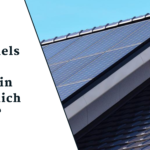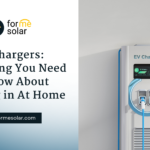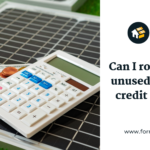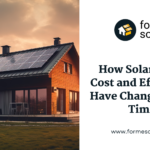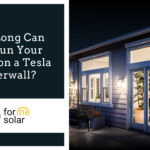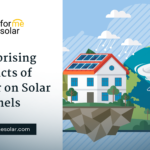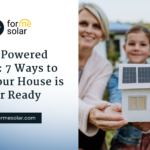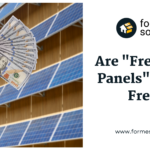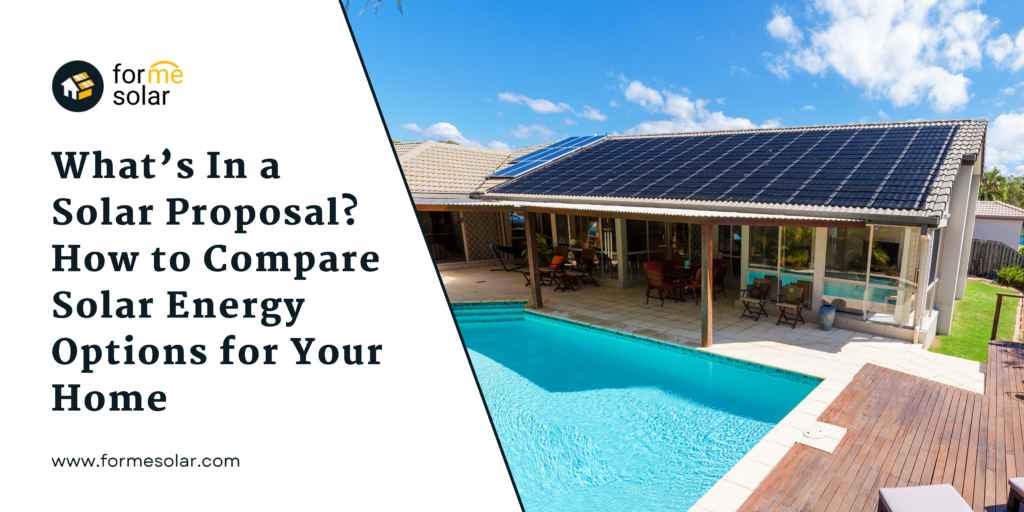
Table of Contents
What’s In a Solar Proposal? How to Compare Solar Energy Options for Your Home
When you decide to harness the power of sunshine for your home, it involves more than simply installing some shiny panels on your roof. This choice marks a smart transition toward clean and sustainable energy. However, before you take the plunge, let's delve into the world of solar bids to thoroughly understand the process. By navigating through the details and intricacies of these proposals, you can ensure that you make the most informed and beneficial decision for your comfortable and welcoming home.
Why Should You Compare Solar Energy Proposals?
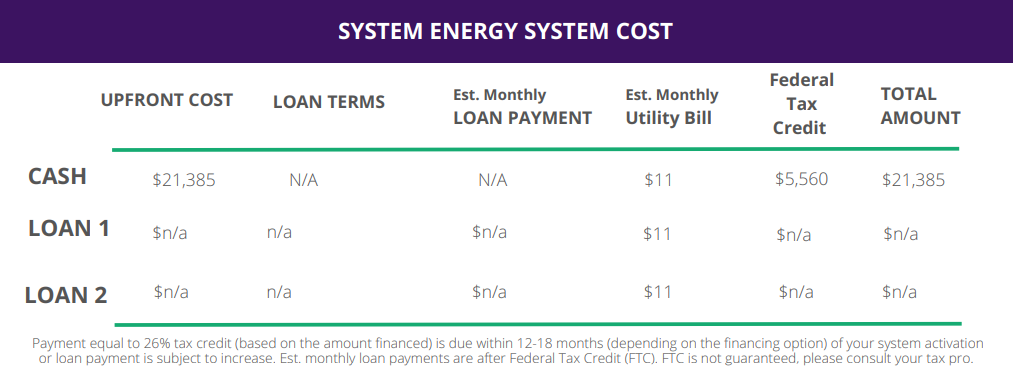
When you're exploring the right solar solution for your business, it's essential to know exactly what you're aiming for from the start. Are you looking to outright own the solar system, ready with the cash, or does a financed solution suit your business needs better? Let's break down the key differences to weigh:
All-Cash Purchase:
Opting for an all-cash purchase essentially means prepaying for your electricity for the next few decades. While it offers long-term benefits, it demands a significant upfront investment. Additionally, your business would likely shoulder the responsibility of maintenance and upkeep. A critical question arises: Who in your business will take charge of the system and handle the ongoing maintenance and monitoring?
Power Purchase Agreement (PPA) or Lease Agreement:
In this scenario, a third party owns and maintains the solar solution. With a PPA, you pay for the electricity based on a solar tariff, typically cheaper than your current rates. On the other hand, a lease agreement involves paying a fixed monthly fee for the system. The beauty of both is that your business doesn't need to cough up money upfront – you pay only for the electricity consumed or a regular monthly installment.
9 Important Things to Understand When Reviewing and Comparing Solar Proposals

- Size and Location of the Solar Energy System: The dimensions of your solar energy system depend on your energy consumption and the necessary panels, measured in kilowatts (kW) or megawatts (MW) for larger installations. For instance, a typical California residential system might range from 5 kW to 10 kW. The proposal should include an aerial view of your California property with solar panels superimposed for visual assessment.
- Energy Production Estimates & Assumptions: Understanding your system's estimated energy production is essential. Your proposal should detail the assumptions used in these calculations, providing insight into expected performance based on California rates.
- Components (Equipment) of the Solar Energy System: The proposal should list solar panel and inverter details, including quantity, brand, wattage, and model. Clear information ensures evaluation based on California's pricing and standards.
- Warranties and Guarantees: Various warranties cover solar panels and inverters. The performance/degradation warranty, spanning 25 years, guarantees the panel's power output over time. Product/equipment warranties protect against defects, wear, and tear. Additional/extended warranties might cover extra costs, with details essential for California standards. Inverters, a critical component, should align with California's regulations.
- Project Scope (Who's Doing the Work and What's Included): Understanding the project scope is crucial. Know who will handle the installation and the services included, aligning with California regulations.
- The Project Schedule: Be aware of the timeline outlined for your solar project in California. Knowing when each phase is expected to be completed helps you plan accordingly.
- The Payment Terms: Clear payment terms should be outlined in the proposal, considering California's average costs. This includes information on upfront costs, installment plans, and any financing options available.
- The Projected Inflation of Your Electric Rates: Understanding how your electric rates might change over time is vital, especially with California's dynamic energy landscape. This information helps you assess the long-term financial benefits of your solar investment.
- The Investment Analysis: The proposal should include a comprehensive analysis of the investment aspects associated with your solar system, considering California's pricing standards. This helps you make an informed decision based on the financial implications of the project tailored to California's rates.
By thoroughly examining these nine components in your solar proposals, you equip yourself with the knowledge needed to make a well-informed decision tailored to your specific needs and preferences.
What You Should Look at When Comparing Solar Cash Purchases Proposals?
When you're thinking about buying solar panels outright, there are a few important things to check in the proposals. It's like making sure you're getting the best deal for your money. Here's what to look at:
- Size of the System: Make sure the solar system they're suggesting is the right size for your home. It's like making sure your shoes fit.
- Cost per Watt: Check the cost for each bit of power the system makes. Ensure you're getting a good deal on the cost of electricity.
- Return on Investment (ROI): Evaluate your earnings relative to your initial investment. Determine if the financial returns justify the costs incurred.
- Solar Power vs. Your Needs: Check if the solar system makes the right amount of power for your home. Ensure it meets your energy requirements effectively.
- Payback Period: Find out how long it'll take for the solar panels to pay for themselves. Understand when your solar investment will start yielding financial returns.
Owning solar panels means understanding the possible challenges and costs that might come up. It's like knowing what could go wrong so you're prepared.
What You Should Look at When Comparing Solar Finance Proposals (Grid-Tied)?
When evaluating the cost of solar energy, it goes beyond the initial price. The crucial aspect is aligning the solar system's capacity with your business's actual energy consumption. It's akin to ensuring that the size of your solar system precisely meets your energy needs.
Consider the following key points when comparing solar financing options:
- Solar Power vs. Usage: Confirm that the solar system is appropriately sized for your business's energy consumption, avoiding excess capacity that might go unused.
- No Take, No Pay vs. Take, or Pay: Determine whether your payment is solely based on the energy you use (No Take, No Pay) or if it's tied to the system's total production (Take, or Pay).
- Agreement Term: Explore options regarding ownership, including whether there's an opportunity for a buyout and when you can take full ownership.
- Annual Escalation Rate: Keep an eye on potential price increases, both in the current electricity rates and the solar PV tariff over the entire agreement term.
- Operational Days: Ensure that the solar system is tailored to your business's operational days, preventing unnecessary capacity for days when your business is not in operation.
What Factors Does Your Solar Partner Take into Account When Determining the Appropriate Size for Your Solar System?
Understanding these factors empowers you to select a solar financing option that precisely meets your business requirements, avoiding unnecessary costs and maximizing your savings.
When your solar partner sizes your system, several crucial factors are meticulously examined to tailor the ideal solar energy solution for your business:
- Budget Alignment: Crafting a solar system that seamlessly integrates with your financial constraints is a top priority.
- Space Limitations: Evaluating the available space—whether on your roof or ground—to ensure the solar system fits optimally within your premises.
- Future Business Expansion: Anticipating the potential growth of your business to align the solar solution with your future needs.
- Weather Analysis: Studying accurate weather data spanning a substantial period, usually a decade, specific to your region.
- Panel Orientation and Shading: Considering the orientation, tilt, and potential shading from nearby structures or trees to maximize solar exposure.
- Panel Ratings and Equipment Type: Assessing the quality and type of solar panels and equipment, distinguishing between tier 1 and other categories.
- Roof Structural Integrity: Scrutinizing the condition of your roof, identifying if any repairs are necessary to support the solar installation.
Tailoring the most effective solar solution for your business demands a thorough understanding of your day-to-day operations. Your solar partner delves into the intricacies of your business to gather upfront information, ensuring a customized and efficient solar system.
Does Your Solar Partner Provide Maintenance Services?
Solar panels are tough, but they still need regular check-ups to work their best and give you the savings you expect. Before your solar system is up and running, the company usually plans out a maintenance schedule. This schedule includes different types of checks to make sure everything is in good shape:
Scheduled Maintenance: Regular check-ups that are planned in advance.
- Condition-Based Maintenance: Extra checks when something seems off or not working as it should.
- Predictive Maintenance: Keeping an eye on things to catch possible issues before they become big problems.
- Reporting: Keeping track of how well the system is doing and fixing anything that's not quite right.
- Reaction Times: How fast the maintenance team jumps into action when there's a problem.
- System Monitoring: Watching over the solar setup to catch any hiccups.
- SHEQ Requirements: Following safety, health, environment, and quality guidelines.
These maintenances are tracked daily and weekly using special measurements. It helps the maintenance team fix things quickly if a solar panel isn't working as it should.
Taking care of your solar system is like keeping a car in good shape with regular oil changes. If you skip these check-ups, your solar panels might not work as well, and you could even lose the warranty that comes with them. For example, not cleaning the solar panels as planned can make them lose up to 20% of the power they should be making. So, it's important to stick to the maintenance plan.
At Forme Solar, our warranties are comprehensive. All the panels we recommend come with their own equipment warranty, and Enphase provides a separate 25-year inverter warranty. What sets us apart is our commitment to quality — we offer a unique 25-year workmanship warranty. If anything goes wrong or malfunctions during this period, rest assured, we'll cover it.
In addition to our workmanship warranty, Forme Solar extends a performance warranty. We guarantee 25 percent of the expected energy generation. If, for any reason, the system falls short of the anticipated 7,326 times 95 percent, we've got you covered. We'll either add extra panels or provide compensation with a check. This aspect is pivotal, and we confidently stand behind a solid 95 warranty on this commitment.
How Much Solar Can Save Based on Your Usage?

Understanding how much money you can save with solar is super important. Let's break it down. If you don't have solar, you might be using around 7,200 units of electricity in a year. That would cost you about $2,317 annually, with a monthly bill of $193. So, over 25 years, your average monthly bill could be around $392.
Now, let's say you want to cover about $193 of your electricity bill each month with solar. Our system can offset $102, maybe even more like $150 or $120. If it's $150, that's like covering a $300 electricity bill.
The offset number is crucial, along with your average electricity bill. We estimate your yearly electricity cost by multiplying your average monthly bill by 12. We're looking at the big picture with solar, thinking about it on a yearly basis.
After going solar, if your usage stays the same, we think your bill at the end of the year could be about $200. The main reason is the extra fees that utility companies charge monthly. Despite these fees, our estimates are usually pretty accurate.
After the first year, if your usage remains consistent, your monthly bill should drop to $17, making your annual payment $201. This shows how going solar can really make a difference in your yearly bills.
Payback period
If you're a homeowner, getting solar usually pays you back in five to seven years. If it's under four years, that's amazing! It's like buying a car, and in just four years, you're driving it practically for free. You've covered all the costs, and now you're mainly just covering a bit for maintenance.
The cool thing about solar is there's hardly any maintenance. Maybe just a wash here and there, especially after a big fire or some dirt, and it still works great. This is all about the money you save over your lifetime, and the time it takes to get your money back is the payback period.
Now, for a 6.29 kW system size, it seems like a fantastic deal because you'll save a bunch of money. You might even get back six times what you put in. We think your solar setup should keep working for at least 25 years. So, after the first four years, the next 21 years are like getting free energy.
Annual Cash Savings with Solar Energy
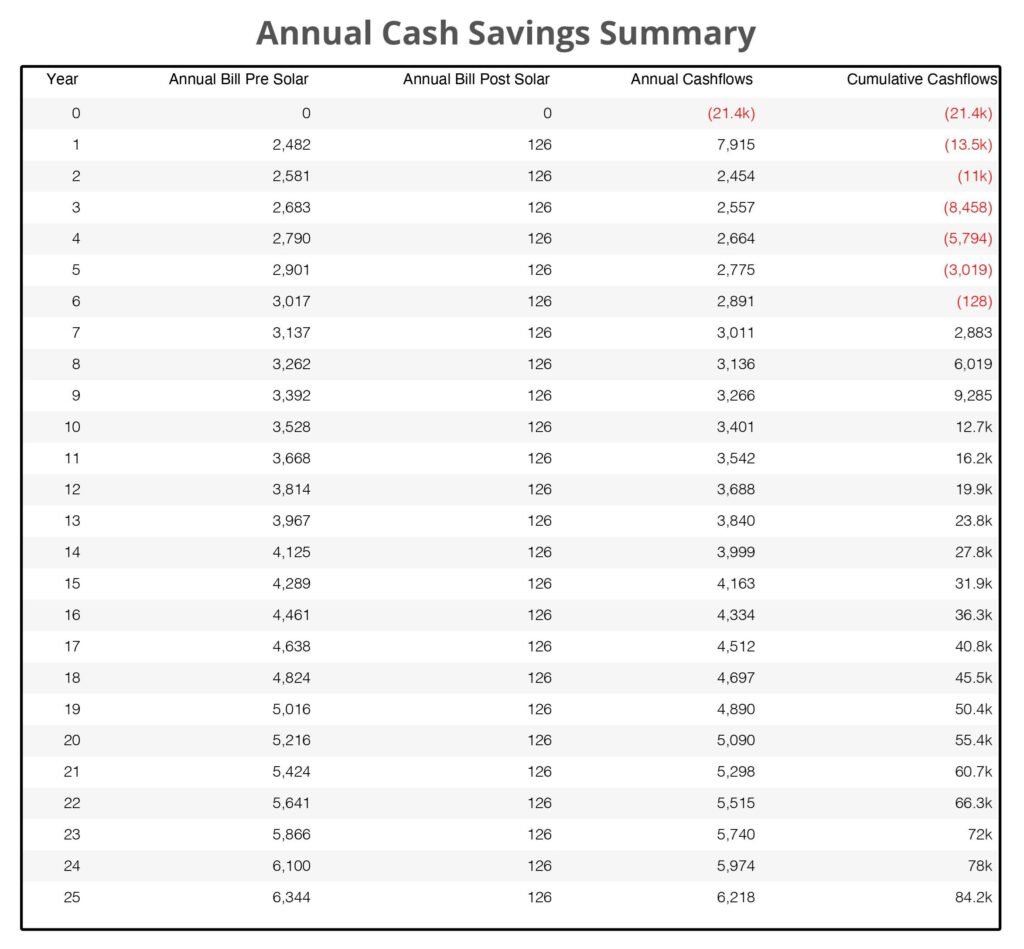
Final Thoughts…
Understanding solar proposals may feel a bit like putting together the pieces of a puzzle. But with the right info, it's your key to tapping into solar power for your home. As you explore different solar options, keep an eye on things like system size, costs, warranties, and maintenance plans. Look into the details to make sure your solar plan matches both your energy needs and budget.
It's not just about the upfront cost – it's a commitment to a greener, more sustainable energy path. Your solar journey starts with grasping the details of each proposal, so you can make a smart choice that trims your carbon footprint and boosts your savings. So, when diving into solar possibilities for your home, let these insights guide you. The sun is ready to brighten your space, and with the right solar plan, you're heading towards a cleaner, more budget-friendly energy future. If you have questions or need assistance, Forme Solar is here to help. Give us a call, and let's explore the solar possibilities for your home together.

